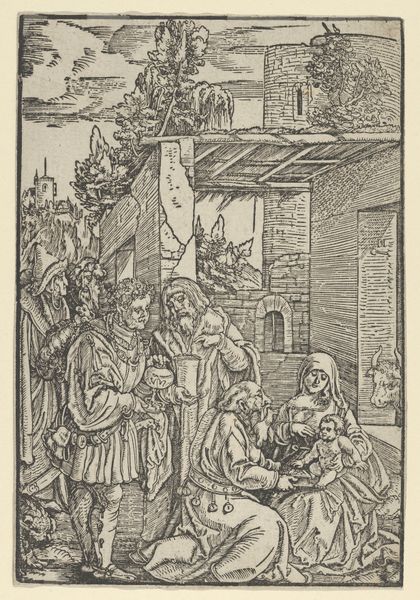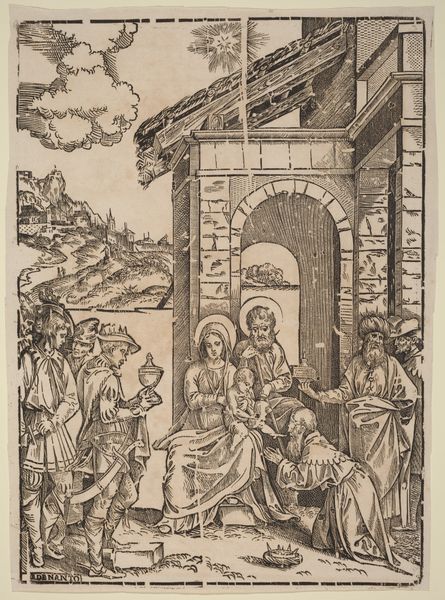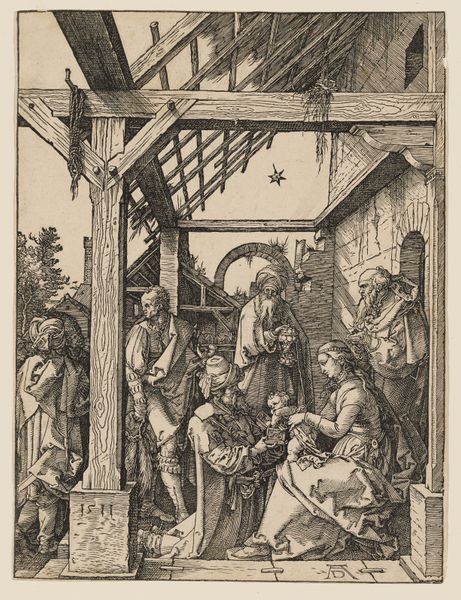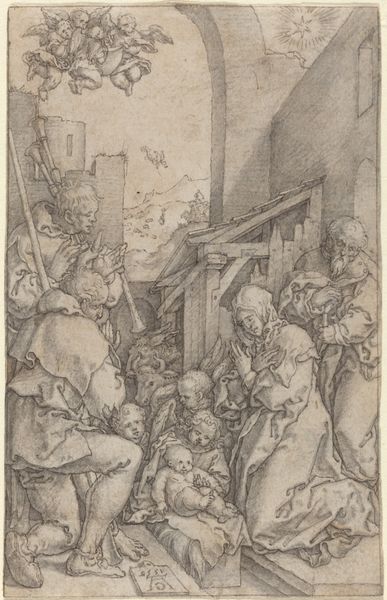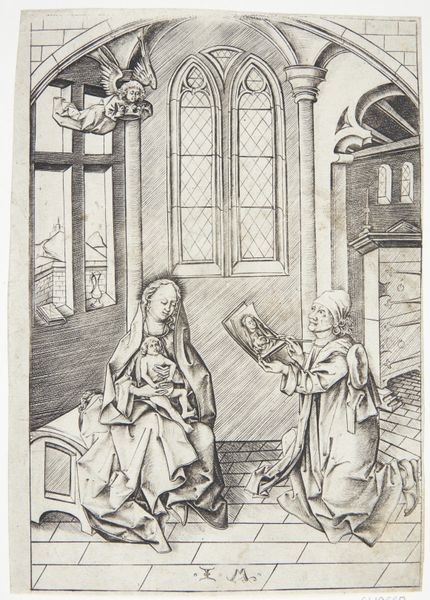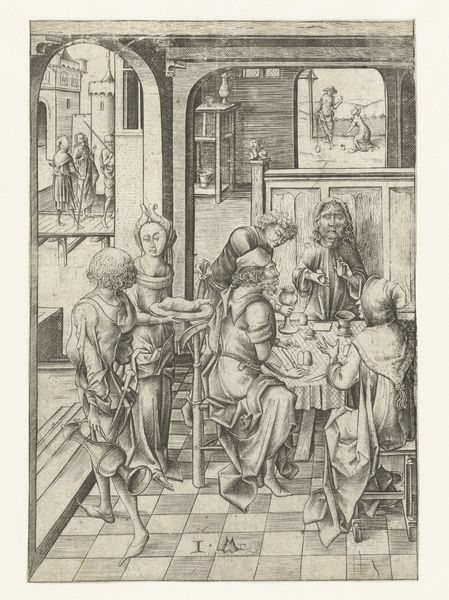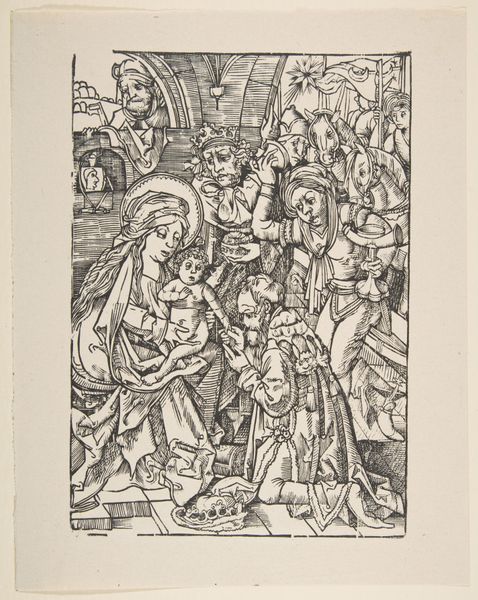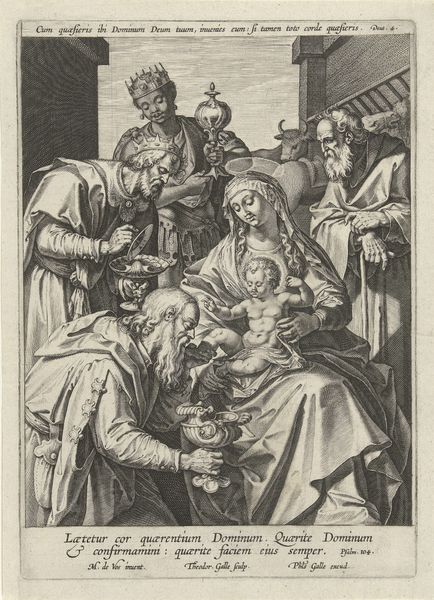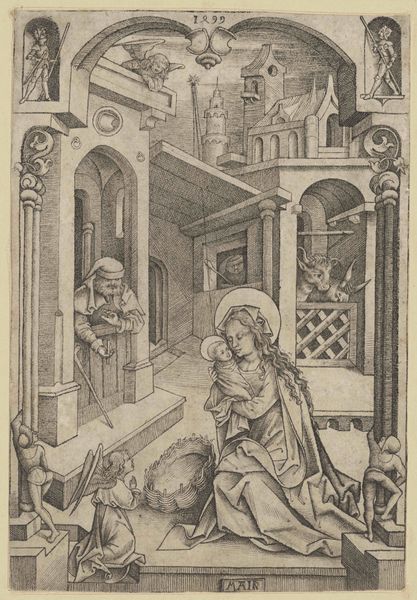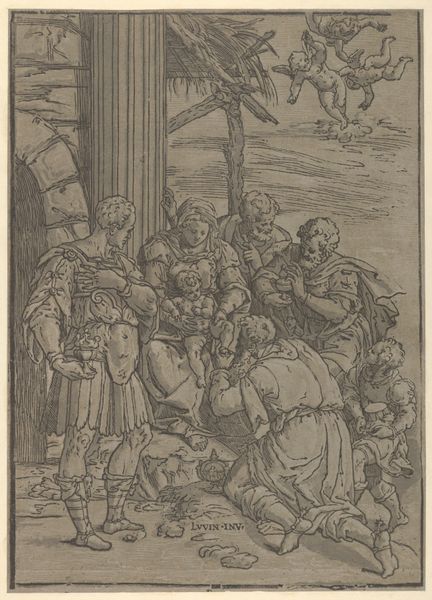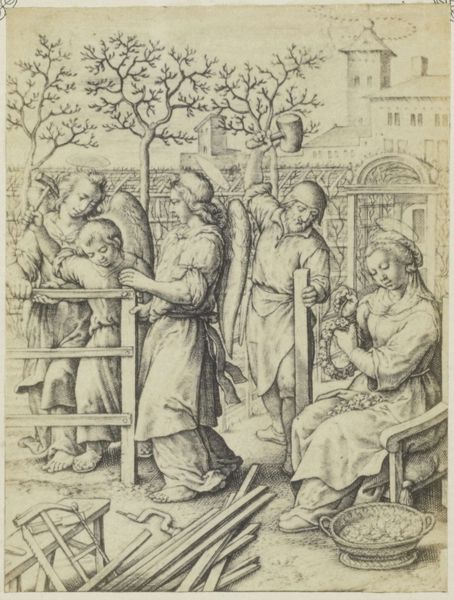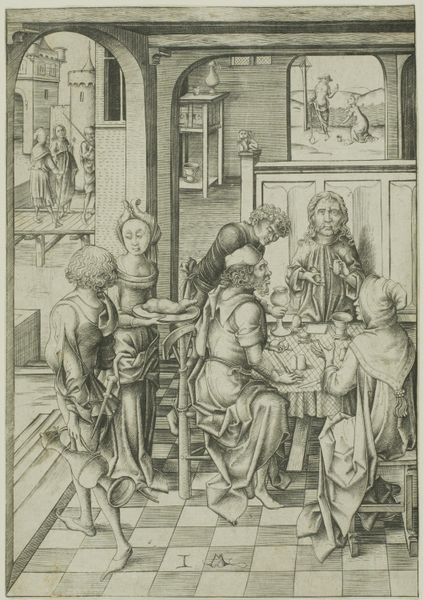
print, engraving
#
narrative-art
# print
#
figuration
#
history-painting
#
italian-renaissance
#
engraving
Dimensions: sheet (trimmed to plate mark): 16.6 x 11 cm (6 9/16 x 4 5/16 in.)
Copyright: National Gallery of Art: CC0 1.0
Editor: So, this engraving is titled "The Nativity," made around 1507 by Benedetto Montagna. The detail is quite impressive. What I find intriguing is the contrast between the holy figures and the rather ramshackle building in the background. What strikes you when you look at it? Curator: As a materialist, my eyes are drawn to the labor inherent in this printmaking process. Consider the engraver, meticulously working the metal plate. The physical act of creating these lines and textures is fundamental to understanding its value, challenging this idea of the “divine” image being separate from human toil. Notice the different line weights—what do they communicate to you about Montagna's process? Editor: I see how he used thicker lines to define the figures, giving them weight and volume. It does highlight the artistry and skill required to produce this, thinking about each line and decision that builds the overall composition. Curator: Exactly. And the consumption of such images. Prints democratized art. No longer limited to the wealthy, devotional images became more accessible to a wider public. This engraving enabled the mass production and dissemination of a powerful religious message, altering its impact. The question is, how does the change in medium—from painting to print—change the message being conveyed? Editor: That's a fantastic point! A print, being more readily available, perhaps makes the scene more relatable to the average person. Seeing the piece through the lens of production and consumption shifts the way I understand its purpose. Curator: Precisely. So, understanding the means of production allows us to reconsider our perception of the sacred in art and, equally, consumption, in relation to these holy themes. Editor: It is like a material interpretation changes not only how we value it, but how accessible such concepts were in a period of economic development! Thanks for the insights!
Comments
No comments
Be the first to comment and join the conversation on the ultimate creative platform.
